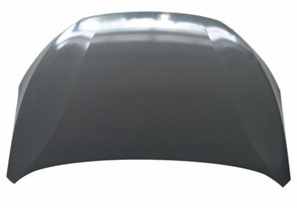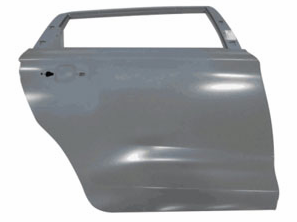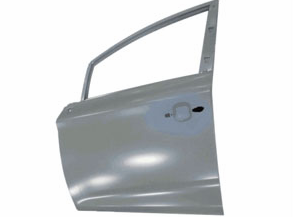Body straightening refers to the process of repairing parts damaged by accident or fatigue to the "state" of the technical standard when the vehicle leaves the factory through a certain external force. For the word "state", it contains two meanings. "Shape" refers to the more intuitive appearance and shape, while "state" is a more abstract and deeper concept, such as whether the internal molecule structure of metal can be reordered according to the original position, whether the internal stress is completely released, and so on. It will directly affect the function and life of the vehicle after repair. Structural parts refer to the components that play a major supporting and bearing role in the body, and are the installation basis of body parts. They are commonly found in longitudinal beams, cross beams, door posts and lower side beams. This kind of component usually has very high strength, and the structure is mostly closed box-shaped section, so certain means and measures should be taken when repairing, using reasonable technology to repair.

Auto Sheet Metal Parts Processing
Using in-place repair technology as far as possible
When the integral body is corrected, the method of in-place repair should be adopted as far as possible. In this way, when pulling, it can effectively "strip" some deformed parts around, but also save a lot of time due to less disassembly and assembly of components. Fig. 1a is a damaged front bar skeleton, which is a closed box section member connected with the front longitudinal beam by a screw. Usually, many sheet metal maintenance technicians will remove the skeleton and correct it, which is not scientific. After the front bar skeleton is impacted, the transmission of impact force will cause the deformation of the front part of the longitudinal beam. It is difficult to repair the skeleton without proper fixation after removal. In addition, the front longitudinal beam needs to be repaired after the skeleton is repaired. So the better way is to do in-place repair, apply a gentle force opposite to the direction of impact on the deformed part with a puller, and then use a suitable crowbar to extend from the opening of the edge to trim some hollow parts on the side of the skeleton, which will achieve very good results.

Automotive body sheet metal parts
Repair of some depressions on the side of the skeleton

Of course, this in-place repair method can also be used in many cases for non-load-bearing body structures. Non-load-bearing body is the traditional girder body. Its frame is an independent component. Generally, the material is thicker. It is formed by reverse welding of U-shaped steel or two U-shaped steel. It has very high strength. Usually it can be divided into frame type and trapezoidal frame type, which are connected with the body by bolts. When this kind of frame is deformed by impact, the usual repair method is to remove the cab and cargo compartment and then rectify the frame separately. In fact, this kind of frame is difficult to have a good anchoring method even after removing the above components, so for some kinds of damage deformation, the method of Fig. 2A can be used for in-situ repair. When the frame is subjected to lateral bending caused by impact, an I-beam (rail steel) with sufficient strength can be placed on one side of the vehicle, which is cushioned to the level of the frame by a horse stool or wood block, fixed with the front and rear parts of the frame by a chain, and corrected by applying thrust force on the bending part by hydraulic jack.
Copyright By © Jiangsu Halreal Vehicle Industry Co., Ltd. 技术支持:翊成网络